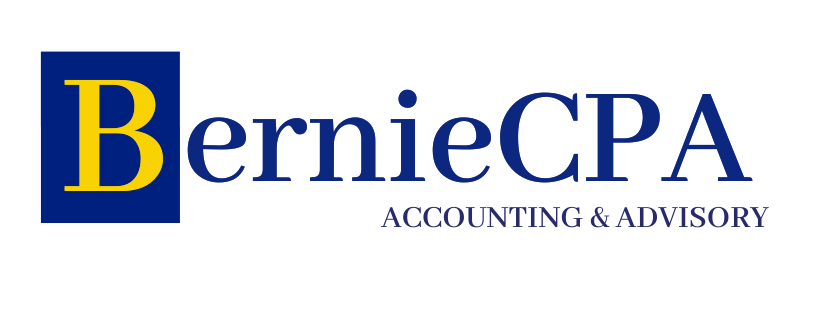Understanding Beneficial Ownership: Who Needs to Fill Out the Form?
Beneficial ownership refers to the individuals who ultimately own or control a legal entity such as a company, trust, or partnership. These individuals may not be the ones listed as the legal owners on official documents, but they have the ultimate authority over the entity and its assets. The concept of beneficial ownership is important for transparency and accountability in the financial system, as it helps to prevent money laundering, tax evasion, and other illicit activities. Identifying the beneficial owners of a legal entity is crucial for law enforcement and regulatory agencies to track and prevent financial crimes.
Beneficial ownership can be a complex and nuanced concept, as it may involve multiple layers of ownership and control. For example, in the case of a company, the beneficial owners may include not only the shareholders, but also individuals who have significant influence or control over the company’s operations and decision-making. Understanding beneficial ownership is essential for ensuring compliance with anti-money laundering (AML) and know your customer (KYC) regulations, as well as for maintaining the integrity of the financial system.
Who is Required to Fill Out the Beneficial Ownership Form?
In the United States, certain legal entities are required to disclose their beneficial owners by filling out a Beneficial Ownership Form. This requirement was established under the Financial Crimes Enforcement Network’s (FinCEN) Customer Due Diligence (CDD) Rule, which aims to enhance transparency and accountability in the financial system. The entities that are subject to this requirement include corporations, limited liability companies (LLCs), partnerships, and other similar entities that are formed or registered under state law.
The Beneficial Ownership Form must be filled out by a “responsible party” of the legal entity, which is typically an individual who has significant control over the entity or who is authorized to represent it. The form requires the disclosure of the personal information of each beneficial owner, including their name, address, date of birth, and social security number or other identifying information. The responsible party must also certify the accuracy of the information provided on the form. Failure to comply with this requirement can result in severe penalties, so it is important for affected entities to understand their obligations and ensure that they are in compliance with the law.
Understanding the Purpose of the Beneficial Ownership Form
The purpose of the Beneficial Ownership Form is to provide law enforcement and regulatory agencies with crucial information about the individuals who ultimately own or control a legal entity. This information is essential for identifying and preventing financial crimes such as money laundering, terrorist financing, and tax evasion. By requiring legal entities to disclose their beneficial owners, the form helps to enhance transparency and accountability in the financial system, making it more difficult for criminals to hide their illicit activities behind complex corporate structures.
The Beneficial Ownership Form also serves to support the efforts of law enforcement and regulatory agencies to investigate and prosecute financial crimes. By providing accurate and up-to-date information about beneficial ownership, the form enables these agencies to track and trace illicit funds, identify individuals who are involved in criminal activities, and hold them accountable for their actions. In this way, the form plays a crucial role in maintaining the integrity of the financial system and protecting it from abuse by criminals and other bad actors.
How to Determine Beneficial Ownership
Determining beneficial ownership can be a complex and challenging process, especially for legal entities with multiple layers of ownership and control. In general, beneficial ownership is determined based on the individuals who ultimately own or control a legal entity, either directly or indirectly. This may include individuals who hold a significant percentage of ownership in the entity, individuals who have significant influence or control over its operations and decision-making, or individuals who benefit from its assets or profits.
To determine beneficial ownership, legal entities must conduct thorough due diligence to identify all individuals who meet the criteria for being considered beneficial owners. This may involve reviewing corporate documents, shareholder agreements, voting rights, and other relevant information to identify the individuals who have ultimate authority over the entity. In some cases, it may also be necessary to obtain additional information from third parties or conduct interviews with key individuals to fully understand the ownership and control structure of the entity.
Consequences of Failing to Fill Out the Beneficial Ownership Form
Failing to fill out the Beneficial Ownership Form can have serious consequences for legal entities, including severe penalties and legal sanctions. Under the FinCEN’s Customer Due Diligence (CDD) Rule, legal entities that are subject to this requirement must provide accurate and up-to-date information about their beneficial owners, and failure to do so can result in significant fines and other penalties. In addition, non-compliance with this requirement can also damage the reputation of the entity and its owners, leading to potential business and financial consequences.
In some cases, failure to fill out the Beneficial Ownership Form may also result in criminal liability for the responsible party of the legal entity. Law enforcement and regulatory agencies take non-compliance with AML and KYC regulations very seriously, and they may pursue criminal charges against individuals who knowingly provide false or misleading information on the form. This can lead to imprisonment, fines, and other legal consequences that can have a lasting impact on the individual’s personal and professional life.
Tips for Completing the Beneficial Ownership Form
Completing the Beneficial Ownership Form can be a complex and daunting task, but there are several tips that legal entities can follow to ensure that they are in compliance with this requirement. First and foremost, it is important to conduct thorough due diligence to identify all individuals who meet the criteria for being considered beneficial owners of the entity. This may involve reviewing corporate documents, shareholder agreements, voting rights, and other relevant information to ensure that no beneficial owners are overlooked.
It is also important to provide accurate and up-to-date information about each beneficial owner on the form, including their name, address, date of birth, and social security number or other identifying information. The responsible party must certify the accuracy of this information, so it is crucial to ensure that all details are correct before submitting the form. Legal entities should also keep detailed records of their due diligence efforts and the information provided on the form, as this can help to demonstrate compliance in case of an audit or investigation.
Resources for Assistance with Beneficial Ownership Compliance
Legal entities that need assistance with beneficial ownership compliance can turn to a variety of resources for help. For example, they may seek guidance from legal professionals who specialize in AML and KYC regulations, as well as from consultants who have expertise in corporate governance and compliance. These professionals can provide valuable advice and support for completing the Beneficial Ownership Form accurately and in compliance with the law.
In addition, there are also software solutions available that can help legal entities streamline their beneficial ownership compliance efforts. These solutions can automate many of the tasks involved in identifying and documenting beneficial owners, making it easier for legal entities to meet their obligations under AML and KYC regulations. By leveraging these resources, legal entities can ensure that they are in compliance with beneficial ownership requirements while minimizing the administrative burden associated with this process.
In conclusion, understanding beneficial ownership is essential for legal entities that are subject to AML and KYC regulations. By identifying and disclosing their beneficial owners through the Beneficial Ownership Form, these entities can contribute to greater transparency and accountability in the financial system while also protecting themselves from potential legal consequences. With thorough due diligence and careful attention to detail, legal entities can ensure that they are in compliance with beneficial ownership requirements and maintain the integrity of their operations.


